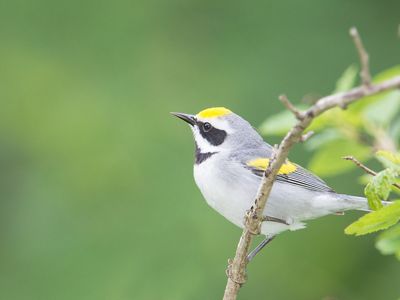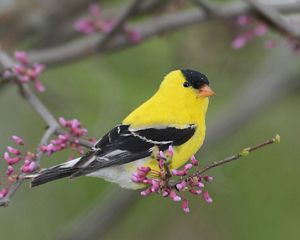Travels with Migratory Birds
The Nature Conservancy is working to protect and restore critical habitat for migratory birds in North Carolina.
The Nature Conservancy has protected over 720,000 acres across North Carolina—including prime birding areas in the mountains and coastal plain. We have conservation experts on the ground working to manage this critical habitat for migratory species as they travel south to winter.

Southern Appalachian Mountains
In the mountains, our land protection work benefits the golden-winged warbler, a migratory songbird whose population has dwindled nearly 70 percent over the past half-century. On their journeys to winter in South and Central America, these warblers pass through the Appalachian Mountains. They are ground nesters, needing grasses and flowering plants to conceal their nests. Sadly, land that would be suitable for nesting has become overgrown.
Indigenous Peoples historically managed land in the Appalachian Mountains with fire, but fire suppression campaigns in the 20th century caused forests to fill in. The result is less habitat for warblers and other birds like them. American woodcock, hooded warbler, yellow-breasted chat, indigo bunting, grasshopper sparrow, prairie warbler, American kestrel, Bachman’s sparrow, vesper sparrow, chipping sparrow, field sparrow and song sparrow are some of the birds that depend on this and similar kinds of habitat. Managing the forest can also be achieved by cutting back vegetation that isn’t natural to the landscape.

At TNC’s Big Yellow Mountain Preserve in Avery County, staff is working to recreate habitat like this—without burning or thinning. The top of Big Yellow is a bald, mostly grazed by cattle. Along the edges, where the bald meets the forest, we are removing cattle to allow some of the grasses to grow back. If this method works, other balds can be managed in the same way for migratory bird populations.
Southeast Coastal Plain
The prothonotary warbler inhabits swamps and bottomlands of the Coastal Plain. Common to blackwater systems, these birds have been spotted at TNC’s Black River Preserve, home to ancient bald cypress—the fifth oldest tree species in the world. They build their nests inside existing tree cavities, inside stumps, or in cypress knees.
Prothonotary warblers are occasionally seen in the Outer Banks. TNC has protected more than 200,000 acres in northeastern North Carolina, providing habitat for a variety of birds. TNC’s Nags Head Woods Preserve is home to more than 50 species of birds. Nearby, at Alligator River National Wildlife Refuge, birders may observe species like the black-throated warbler, American kestrel, northern parula and summer tanager.

The Nature Conservancy is addressing the challenges facing migratory bird populations by continuing to acquire property, restoring forest habitat, and advancing sound climate change policy. Your support makes a difference to birds in North Carolina and beyond.



